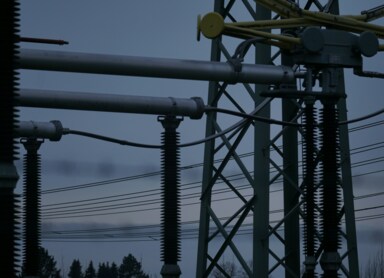Renewable and non-renewable energy sources: a comparison
Electricity is undoubtedly one of the pillars of modern life. It supports our daily activities, fuels cars, lights up cities and powers electrical appliances. However, the sources of electricity we use can have a significant impact on the environment and climate. It is worth understanding the difference between non-renewable energy sources and renewable energy sources, and why the latter are becoming increasingly popular.
Non-renewable energy sources - everything you need to know about them
Non-renewable energy sources are those that are not able to reproduce themselves on a time scale. They are extracted from the ground, burned or otherwise used to produce electricity.
Examples of non-renewable energy sources
- Coal - has been a major source of energy over the years, but its extraction and combustion contribute large amounts of carbon dioxide (CO₂) emissions, which have a negative impact on the climate.
- Oil - is a fossil fuel used to produce petrol, heating oil and other products. Oil extraction and combustion also contribute to CO₂ emissions and air pollution.
- Natural gas - in practice, the crude itself is a relatively clean source of energy, while its extraction and transport can cause leaks of methane, which is a greenhouse gas.
Renewable energy sources - knowledge base
Renewable energy sources are those that rely on natural renewal processes and do not run out. They are environmentally friendly and more sustainable.
Examples of renewable energy sources
- Solar - solar energy is extracted from sunlight using panels. It is clean, widely available and produces no CO₂ emissions.
- Wind - wind energy uses wind power to turn turbine blades, generating electricity. It is an efficient and low carbon energy source.
- Water - hydropower harnesses the potential of rivers and lakes, as well as tidal and ocean energy. It is a stable and sustainable source of energy.
- Biomass - uses organic materials such as wood, agricultural waste or biogas to produce energy. It is a renewable energy source, but requires proper resource management.
Advantages of renewable energy sources over non-renewable ones
Renewable energy sources have great advantages over non-renewable ones and offer many benefits. Firstly, they are much cleaner than non-renewables - they do not emit significant amounts of CO₂ or other air pollutants. In addition, they never run out, meaning they can be used continuously. There is also less risk of environmental disasters associated with resources such as oil spills.
Furthermore, the use of renewable energy sources contributes to energy independence from conventional sources. It is also worth mentioning the development of the labour market - renewable energy sources and their development promote the creation of new jobs and the expansion of the green energy sector, which can have a positive impact on the economy and society.
Renewable and non-renewable energy sources - summary
Renewable energy sources are the future of energy as they offer sustainable, environmentally friendly solutions. As awareness of environmental issues and climate change grows, renewable energy sources are gaining importance and investment in them is key to building a sustainable future.






